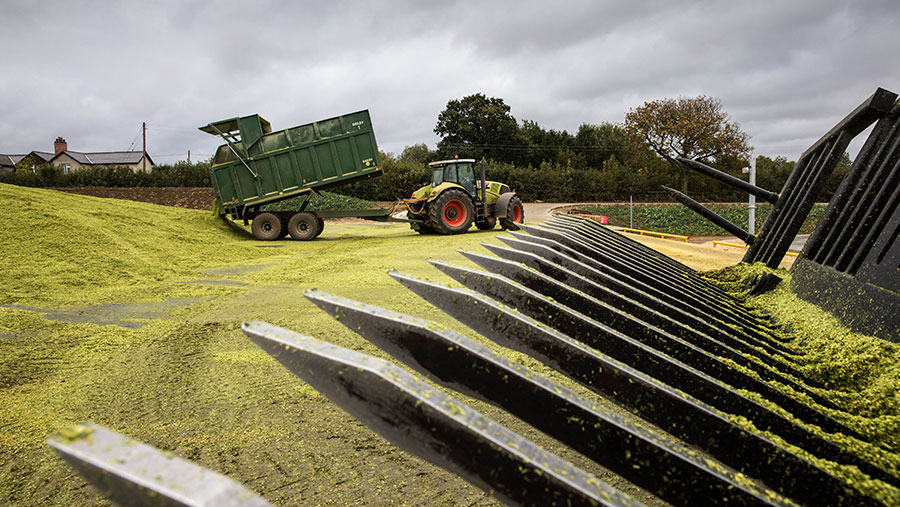How maize silage analysis can reduce fertiliser spend
 © Tim Scrivener
© Tim Scrivener German growers are using maize silage crude protein levels to gauge the next year’s fertiliser requirements, resulting in reduced leaching and input costs.
Crude protein levels of 8-8.5% in harvested maize samples can signify a need to cut nitrogen input by up to 60kg/ha overall, potentially saving more than £300/ha.
This is according to German Maize Committee president Friedhelm Taube, Kiel University, who said money could be saved without yield losses.
See also: Maize Watch: Advice on reducing soil erosion post harvest
Research shows maize fields producing silage analysing at 7.2% crude protein or more leach more nitrates.
Nitrogen (N) surpluses average close to 100kg N/ha on UK farms.
“On livestock farms with 1.2 livestock units a hectare, it is feasible to reduce the surplus to 60kg,” Prof Taube told Farmers Weekly. “German research shows that roughly 75% of the surplus is directly linked to negative environmental effects and 37kg is lost through leaching.”
He says more than 70% of German farmers are oversupplying N because they are forgetting about the N in the slurry.
Simon Draper, independent agronomist for the MGA, agrees, suggesting that, in many cases, UK farms could cut nitrogen by 40-50%.
How it works
The process uses a standard maize silage analysis used at any commercial or academic laboratory.
The growers then consult a table (see “How maize crude protein affects nitrogen advice”) based on a growing body of research evaluating how N concentration in maize is affected by:
- Leaching
- Rain
- Crop maturity and dry matter
UK maize production has historically seen crops take 100-110kg N/ha to grow, with nitrate vulnerable zones limited to applying 150kg N/ha – the N-max limit.
Further research is needed to understand how N is stored, released and used in the soil profile form year to year as a “nitrogen bank”, said Prof Taube.
How maize crude protein affects nitrogen advice |
|
|
Crude protein level (%) |
Action on nitrogen application |
|
6.5-7 |
Optimal – no change |
|
7-7.5 |
Reduce nitrogen input by 20kg/ha |
|
7.5-8 |
Reduce nitrogen input by 40kgha |
|
8-8.5 |
Reduce nitrogen input by 60kg/ha |
Nitrogen profiling
The German work is a simplified version of a N predictor service currently available in the UK.
The MGA provides N fertiliser guidelines based on a maize silage sample and individual farm information on a myriad of factors (see “Factors affecting nitrogen inputs in maize crops”).
The service is free for MGA members, but is available to non-members for £20 .
Factors affecting nitrogen inputs in maize crops |
|
|
Why a crop may need less N |
Why a crop may need more N |
|
|
Friedhelm Taube was addressing the Maize Growers Association (MGA) conference near Derby on Thursday (6 February)
